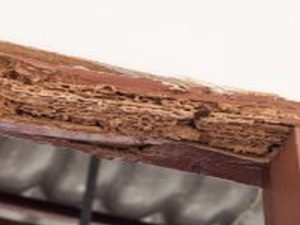LED Lights: Lighting the Path to Sustainable Business Practicesư
3 min read
Modern LED lighting systems are extremely energy efficient, thereby saving energy and decreasing carbon emissions. They allow companies to lower their power bills as well as obtain green building certifications.
The life span of LEDs may be reduced by frequent switching. The effect is reduced by intelligent systems which follow schedules.
Energy-efficient
LED light bulbs consume significantly less energy than other types of lights. They don’t use filament materials which need to be heated in order to produce light. Instead, they are employing photons to brighten the area. They use around 80% less energy over their equivalent incandescent lights.
In addition, LEDs are more durable over other bulbs, which means that they require replacement far less frequently – generating less pollution.
Additionally, LEDs can be recycled and safe. These components are able to be recycled to create glue and potting materials or reused for other items, helping to reduce garbage disposal. Manufacturers have recycling programs available for their product. This aids in proper disposal of waste and the recycling. This is a wonderful option to limit the effects of lighting within your green design project.
Longevity and durability
One of the key characteristics that sets LED lights distinct from other forms of lighting is their longevity and endurance. The systems for dispersing heat in LED lights are responsible for this.
The longevity of their LEDs may be result of several aspects, such as proper installation and the environment. If the LEDs are not properly installed and placed in an area where there are excessive temperatures and humidity, they could break down quickly and even degrade their components.
Additionally, these bulbs consume less energy and therefore need to be replaced less frequently. It will in turn reduce the quantity den am nuoc of trash produced and eases the strain on landfill facilities.
Redued carbon emissions
While it may require a larger upfront investment, LED technology pays for itself through significant savings in energy as well as long-lasting lifespans. It lowers maintenance costs as well as negative environmental impacts for businesses.
They’re eco-friendly because they don’t contain hazardous substances like CFLs. LEDs are less prone to an impact on the environment, and convert 95 % of their power to the form of light. They also reduce the amount of energy wasted.
One of the most important questions is the source of the raw components of an LED bulb are sourced, but experts say there are plenty of choices. Gallium, for instance is extracted from bauxite, which is mined for aluminum. Metal can be recycled into diodes. The aluminum and plastic cases from the bulbs that have been discarded may also be used to recover the other elements.
Mercury-free
The LED bulbs, unlike fluorescent ones, do not emit harmful substances and are free of mercury. It reduces contamination risk and facilitates the disposal of LED bulbs when they are no longer needed.
Additionally, LED lighting is produced using eco-friendly processes and materials. LED lighting can be reused making it possible for manufacturers to cut down on waste from the manufacturing process, and to reduce consumption of materials.
The environment can be protected by selecting LED lighting with a green design and also help to create the environment for a healthier work place. This technology offers businesses the opportunity to have positively impact on their surrounding environment, by reducing their energy use, costs and pollution. In enticing employees to be in a comfortable environment, you can enhance productivity and improve general efficiency.
Smart lighting and flexibility
LED bulbs draw less power than conventional bulbs, because they are able to focus light precisely. This eliminates the need to use energy for reflectors and diffusers. Additionally, they produce lower heat levels, thus reducing the requirement to use air conditioning as well as cutting down on energy consumption.
Since LEDs don’t contain hazardous substances like mercury, they could be utilized to decrease the amount of waste to be disposed. In addition, LED lighting can be integrated with smart systems to provide additional functionality and efficacy.
LED producers are now utilizing processes that are energy efficient to decrease the carbon footprint associated with the manufacturing process. The products are able to be recycled and allow for the use of products like aluminum and rare earth metals that are able to be reused. This reduces the need to mine new resources. As LEDs last longer, they decrease the amount of garbage and the need to replace them frequently.



